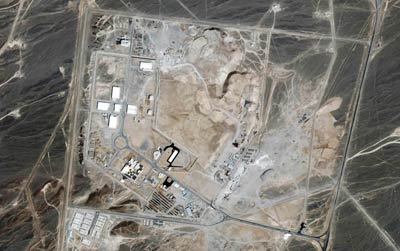Intelligence failure at the networksby Taylor Dinerman
|
| The biggest story that would be perfect for satellite imagery is the ongoing slaughter in the Darfur region of western Sudan. |
These images are ideal for covering stories that cannot be covered by conventional means. Usually, TV crews cover a story from a hotel where all the other media are staying: where they get their briefings and where the pool that covers major events is formed. These hotels are also where their local stringers come to pitch stories and where they have their best communications links with headquarters back in the US. These hotels are also under heavy surveillance by all the elements interested in shaping the stories, including intelligence agencies and terrorist groups. This clustering always seems to produce “groupthink.” Everyone covers the same events and other happenings are ignored, again, by all the media. It takes a brave reporter to go against the herd or to break away from the cocoon.
Satellite imagery generally gets away from this comfortable and well-understood template. The stories for which it is best suited are not those that area adapted to a big, ongoing item such as the wars in the Middle East or the Laci Peterson trial. For example, satellite imagery would be ideal for covering the North Korean gulag. A story combining overhead pictures with the testimony of the victims would be a powerful way to expose the horrors that are going on daily in one of the world’s most forbidding journalistic environments. The imagery could also be used to expose illegal and environmentally harmful logging and mining operations in the Amazon and could give the Brazilians a chance to showcase their efforts to preserve that huge region. The same imagery could be used to insure that the claims made by the Brazilians were accurate.
The biggest story that would be perfect for satellite imagery is the ongoing slaughter in the Darfur region of western Sudan. The black Muslim population of this region is being terrorized, enslaved or driven out of their villages by paramilitary forces backed by the Islamist government based in Khartoum. Thirty thousand people have been killed and hundreds of thousands of refugees are being driven into camps in neighboring Chad and elsewhere. This is simply the biggest ongoing humanitarian disaster on this planet.
| Someday, someone will find a way to use satellite imagery in a news story in an exciting and captivating way, so as to change the nature of TV news forever. |
Like the Ethiopian famine of 1984, this is not a story the media wants to cover. There are ideological reasons for this, as there were in 1984, but there is also the problem that there is no convenient hotel, or other base, from which to cover the story. To put a reporter and crew out in the field in SUVs with mobile satellite hook ups, and with enough security to ward off the inevitable bandits, would cost an awful lot of money. A news chief would look at the costs and then, at his or her budget, and conclude that covering the story for a week would eat up his entire overseas operations budget for a year or more. He could send in a freelance team, but he would have little quality control over their product and, by the time they got back, their footage would be more than a week old, probably suited more to the History Channel than to a competitive news organization. Satellite imagery seems the obvious solution. One-meter resolution pictures will show that the village that was there last week was burned or otherwise destroyed. A smart producer could find enough experts, both in image interpretation and on the Sudan, to provide the viewers with context and narration of what the satellites are seeing.
No network has, so far, come up with a way to integrate commercial satellite imagery with an ongoing major news story. During the 2001 crisis over the US Navy EP-3 held by the Chinese on Hainan Island, the networks used a single image of the aircraft on the ground to illustrate their stories, but they failed to use other images of PLA air bases or of the weather conditions at the time of the incident to provide decent context for the story.
Someday, someone will find a way to use satellite imagery in a news story in an exciting and captivating way, so as to change the nature of TV news forever. When that happens, the commercial remote sensing industry will have truly come into its own but, until then, all we can do is to wait and hope.
